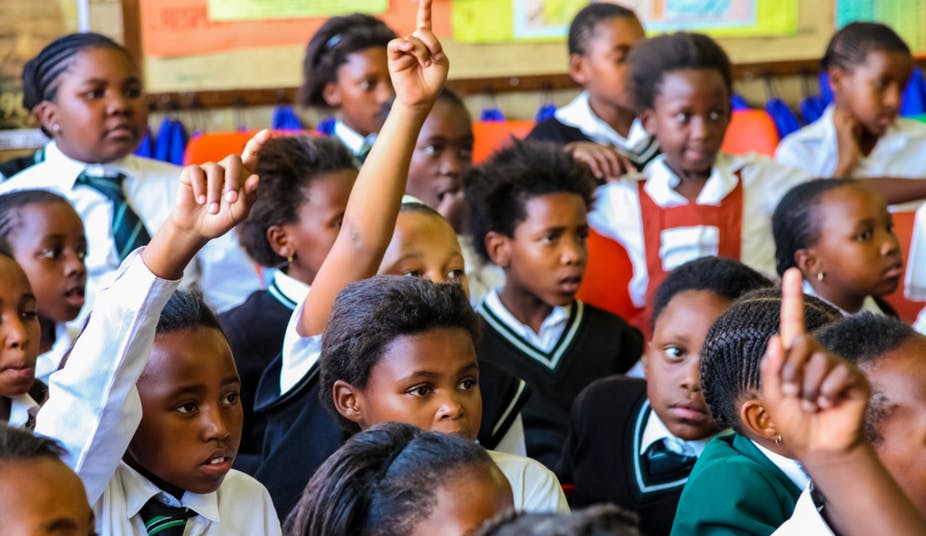Nhlanhla Mpofu, University of the Free State
The preparation of student teachers is a critical aspect of their journey to being professional teachers. And teaching practice – real-world experiences that students acquire from actual classroom teaching before they are qualified teachers – is one important characteristic of this preparation process.
During this process, student teachers entering the profession are supported to realise that teaching is not just about applying learnt theories. It also requires practical problem solving expertise that leads to effective teaching. Simply put, it’s not adequate for student teachers to only observe and read about teaching if they don’t also practise it.
According to research, mentorship from experienced teachers and systematic reflection in practice helps student teachers to cultivate knowledge of the subject, learners and teaching communities.
In South Africa, all initial teacher education institutions are mandated through policy to include teaching practice as part of the Bachelor of Education programme. I recently conducted a study about teaching practice at one South African university.
At this institution, teaching practice begins in the first year of enrolment. In the first two years, the students are sent to schools for a time to observe an experienced teacher in the actual process of teaching. In the last two years of the study, the student teachers began the actual teaching under the mentorship of an experienced mentor teacher.
I wanted to know how student teachers in their third year deal with what are known as “critical incidents”. These are defined as unplanned and unanticipated events that occur during a lesson or outside the classroom that provide an important insight to the practitioner about teaching and learning. For example, a high school teacher might plan to have learners debate on a topic, but discover that the learners are unable to construct a comprehensible English sentence. This incident will serve as a future reference to the teacher not to assume the learners’ level of proficiency.
In my study, I found that the student teachers used critical incidents to notice, reflect and reshape their teaching practices. Such reflection is critical as it enables them to question their practices, the initial process to their professional development.
Three key areas
In my study, I examined the critical incidents that the 38 student teachers who were being prepared to teach English in high school encountered during teaching practice. These incidents resulted from situations in which student teachers were puzzled about how to maintain an effective teaching environment.
Three key areas emerged from the study. One related to discipline; the second was about student teachers’ professional identity; the third outlined how student teachers grappled with differences between theory and practice.
Firstly, the student teachers felt challenged in maintaining classroom discipline. They found that there was a mismatch between the theories of classroom management they had studied at university and the realities of the classrooms where they had been placed.
Classroom indiscipline was largely a result of large classes and limited learning resources. Learners also often struggled with the English language – they came from multi-lingual backgrounds and were learning English as a second language.
The student teachers seem to have learnt that the failure to match subject knowledge and the actual context of the classroom caused ill-discipline among learners.
Secondly, the student teachers learnt that the way they chose to groom themselves as professionals, especially in dress, influenced how learners assigned credibility to them as teachers. The student teachers became aware that their developing professional identity was shaped in interactions with others – including the learners during various activities of teaching and learning.
While the student teachers had only focused on the classroom as a source of practising their professionalism, they came to realise that sites of instruction were multiple and, at times, informal.
Thirdly, the student teachers experienced estrangement between the theories of second language teaching and the practical instruction needs in the classroom. Although the student teachers have theoretical knowledge of teaching English, the realities in the classroom did not align to their preparation experiences.
Perhaps the most significant “incident” that all the student teachers described on this point was that their learners lacked the prior knowledge they’d expected to be in place at those levels. They filled the gap by developing remedial programmes to help their learners. But they told me they weren’t certain they’d be able to continue with this sort of support when they actually became full-time teachers. They worried doing this would add to an already heavy work load.
What does this mean?
These findings lay bare just some of the wide range of experiences to which student teachers are exposed when they work in classrooms and schools. The study also shows how student teachers responded to these incidents: they saw them as a learning process that caused them to act, respond and reflect so they could maintain quality teaching.
These descriptions are important as evidence of the way student teachers reframe, rephrase, reshape and ultimately transform their teaching practices to reflect both context and diversity in English Language teaching.![]()
Nhlanhla Mpofu, Senior Lecturer, University of the Free State
This article is republished from The Conversation under a Creative Commons license. Read the original article.



